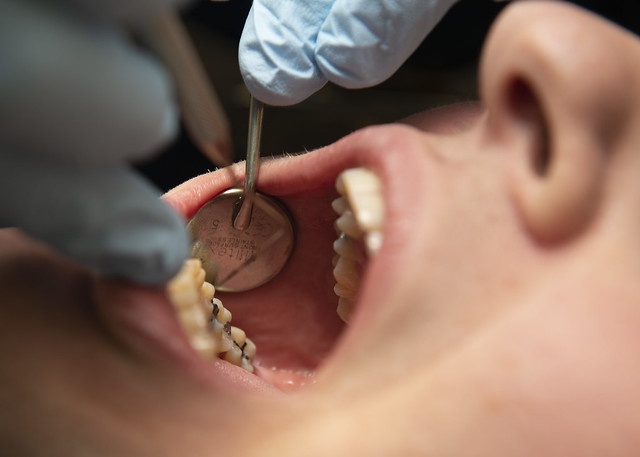An interesting article titled “The effect of risk communication on periodontal treatment outcomes: A randomized controlled trial” appears in the 2019 edition of the Journal of Periodontology written by Asimakopoulou et al. The article explores using psychological interventions to reduce gum disease.
In the article the authors were inspired by a Capability-Opportunity-Motivation-Behavior model to improve clinical, psychological, and self-reported behavioral outcomes. Specifically the authors sought to assess such things as periodontal probing depths and bleeding on probing, self reported teeth brushing, and thoughts about periodontal disease. The authors randomized 97 adults with moderate peridontal disease who presented at King’s College London in the U.K. into three treatment groups: 1) usual dental treatment, 2) dental treatment and a report on their disease risk and 3) dental treatment, a report, and a program to improve their dental health. The participants had data collected at the beginning of the study, after 4 weeks, and again after 12 weeks. During each collection plaque was assessed along with probing depths and bleeding on probing.
The patients in group 1 known as control participants received typical treatment comprising oral hygiene, discussion about periodontal disease, and a generic leaflet. Those in the second group received an additional 5 to 10 minute explanation of their individualized risk using an online tool to provide an objective analysis of patient susceptibility and severity to periodontal disease. Patients were also supported in discussing behaviors to reduce their risk of periodontal disease progression. Those in the third group received the same as the second group plus they set SMART (SMART refers to: Specific, Measurable, Achievable, Realistic, and Time-Specific) goals to target their behavior, received a checklist to self-monitor activity for 12 weeks, and received a plan to help them achieve their goals.

The authors found that those in group 1 achieved about a 3% reduction in plaque after twelve weeks but this was not statistically significant. On the other hand, group 2 showed a significant plaque reduction at 4 weeks (from 21.59% to 12.22%), and at 12 weeks (9.33%) that achieved statistical significance. Further the third group had a significant reduction in plaque at 4 weeks (from 16.23% to 10.91%), and again at 12 weeks (9.65%) which also achieved statistical significance. The authors also found that bleeding on probing and probing depths decreased in all three groups. It was found that those in group 2 and group 3 had an increased frequency of dental cleaning in the morning and those in group 3 had an increased frequency of dental cleaning in the evening.
The authors state
“This evidence supports the notion that a simple behavioral
intervention using personalized risk information and a
standard behavior change script, delivered by a dentist, can
lead to statistically significant improvements in plaque scores
sustained at 12 weeks…This is an encouraging set of findings suggesting this simple, behavioral intervention may effectively increase interdental cleaning in patients who brush regularly.”
The authors thus seem to indicate that giving patients disease risk information might lead them to change their behavior. The authors note a few limitations of the study such as the age and socioeconomic status of the patients used. Further they note that some breaking of blinding of patients to the clinicians could have occurred in groups 2 and 3.
